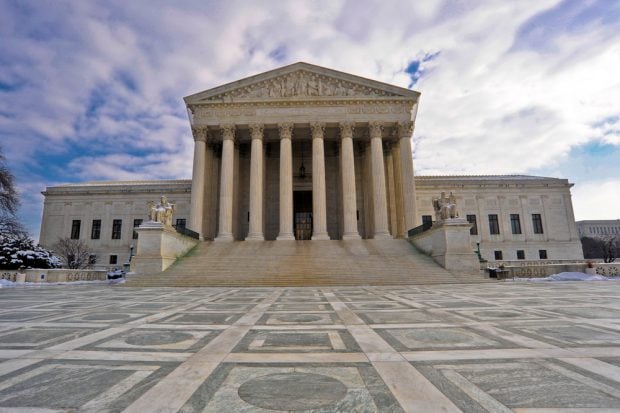Before the election results, I was addicted to the trackingpolls. There, I said it. On the weekends, during my work breaks, onairplanes … I was checking the presidential horserace, the numerousclose Senate races and the competitive House contests. The 2016election has been the most watched in recent memory, and besidesthe “who's ahead today” discussions, many readers were wondering,“How will the 2016 election results affect my personal and worklife?”
|It was difficult at times to ignore the media firestorms and“advice” from those that claimed they could (a) predict the resultsand (b) how they might impact you.
|Now that the election results are in, we still don't necessarilyhave an answer to this central question.
|So, what's a person to do? In short, think in cycles.
|Filene Research Institute's recent publication, “Trending:Credit Unions 2025,” explored what the credit union system maylook like in the middle part of the next decade. To tackle thiscomplex issue we weighed a host of variables, which can be brokendown into trends and uncertainties. Trends are important drivers ofchange with a high likelihood of predictability … for example,unless a zombie apocalypse only impacts Gen Y, we can reasonablypredict this generation will represent the largest segment of theworkforce and consumer base by 2025. On the other hand,uncertainties are also important drivers of change but with a lowlikelihood of predictability … for instance, we know technologywill impact consumer finance but we don't know specifically how.Many predict technological progress will lead us to favor virtualrelationships over analog ones, but what if we experience ashocking hack into our private, financial lives? Technology will beimportant but for very different purposes and outcomes.
|Similarly with the 2016 election, we know the outcomes willdrive change at the international, national, state and local level,but we don't know specifically how. Even now that we know withcertainty that Donald Trump is our new president elect andRepublicans still hold the House and Senate majority, the outcomefor credit unions is still very uncertain.
|A great way to frame this (and other) drivers of change is toensure you think in cycles. Recently my colleagues and I have beenworking with credit unions on a concept called The Strategy Cycle. Carried out over the course of a year, TheStrategy Cycle includes methodologies to help you identifystrategic issues, consider those challenges in a productive way andtransfer those learnings into the strategic planning process. Theoutcome of the 2016 election is one of the topics that we couldinclude as a “key input” into this process.
|Let's break it down through an example for a hypothetical creditunion and three scenarios.
Scenario 1: Clinton wins the presidency. House and Senate stayRepublican and Senate (50% probability 30 days before theelection)
Potential credit union impacts: Status quo situation, resultingin very little public policy changes for economic, social and tradeissues. Increased focus on defensive policy positions to ensure thecurrent set of rules stay intact. Economic models remain unchangedin terms of growth rates and monetary policy.
Scenario 2: Clinton wins the presidency. House and Senate swingDemocrat (15% probability)
Potential credit union impacts: Public policy becomes moreproscriptive on economic, social and trade issues. Advocacy for thecredit union position becomes more offensive to ensure the creditunion model operates unimpeded. Economic models shift toward afocus on higher cost funds and undetermined growth rates.
Scenario 3: Trump wins the presidency. House and Senate stayRepublican (35% probability)
Potential credit union impacts: Public policy becomesunpredictable on all issues. Credit unions circle the “status quo”wagon and impose a wait and see perspective on advocacy issues.Economic models remain unchanged (but volatile) in the near-termand strong attention is paid to early warning signs of morepredictable policy.
First, note how it is important to explore multiple, potentialoutcomes and assign a probability to each result so that youprioritize scenarios based on likelihood. Next, it is essential totalk about both direct (public policy) and indirect (economic)impacts of the potential outcomes. Finally, it is important toremind the reader that this amateur analysis simplifies thingstremendously because this scenario explores only one (very large)variable. In reality, external impacts are a multivariate game sowe should really be studying the cumulative impact of the 2016election along with consumer sentiment, technology change anddemographic shifts.
|Now that the horserace is complete, traffic to the trackingpolls will inevitably fall off so you can fill all your free timewith strategic discussions about what the election outcomes meanfor your credit union. It will surely be an interesting ride as wecycle through the many changes to the world we all live in.
||
 George Hofheimer is chief knowledge officer, FileneResearch Institute. He can be reachedat 608-852-4632 or [email protected].
George Hofheimer is chief knowledge officer, FileneResearch Institute. He can be reachedat 608-852-4632 or [email protected].
Complete your profile to continue reading and get FREE access to CUTimes.com, part of your ALM digital membership.
Your access to unlimited CUTimes.com content isn’t changing.
Once you are an ALM digital member, you’ll receive:
- Critical CUTimes.com information including comprehensive product and service provider listings via the Marketplace Directory, CU Careers, resources from industry leaders, webcasts, and breaking news, analysis and more with our informative Newsletters.
- Exclusive discounts on ALM and CU Times events.
- Access to other award-winning ALM websites including Law.com and GlobeSt.com.
Already have an account? Sign In
© 2024 ALM Global, LLC, All Rights Reserved. Request academic re-use from www.copyright.com. All other uses, submit a request to [email protected]. For more information visit Asset & Logo Licensing.









